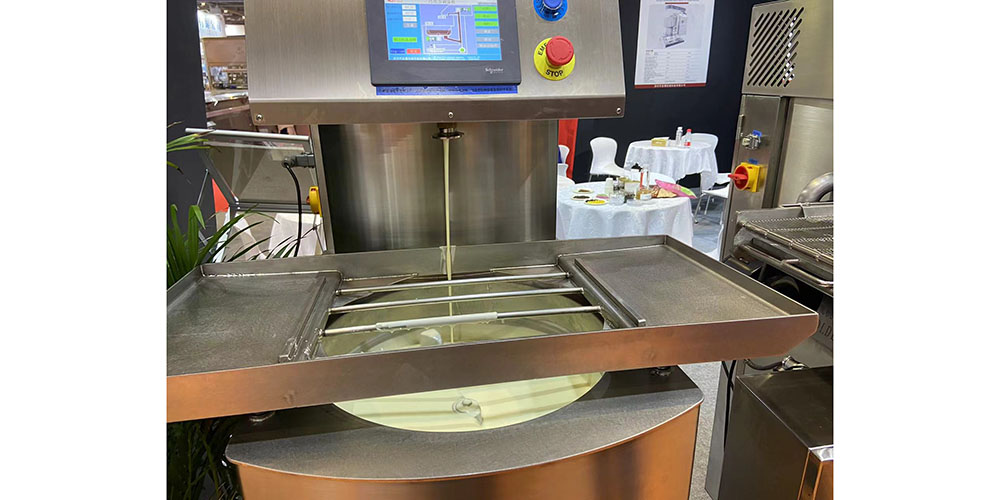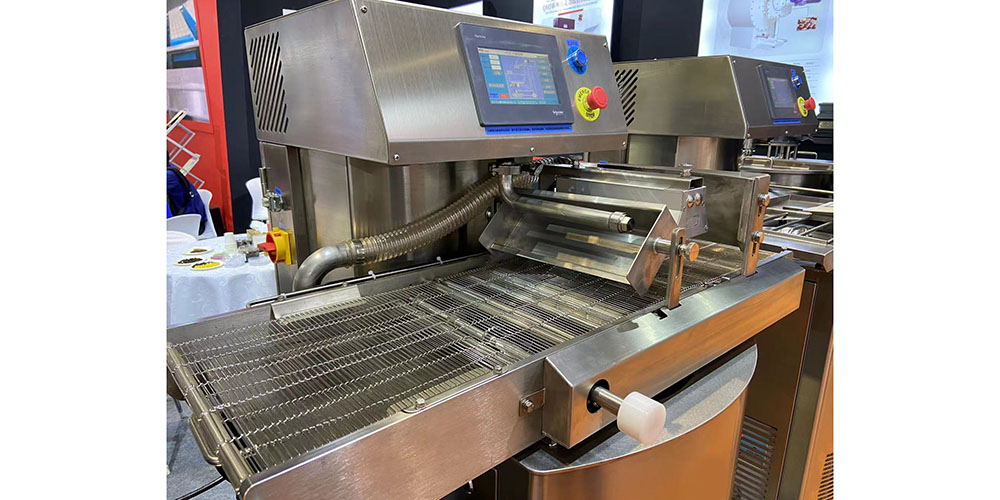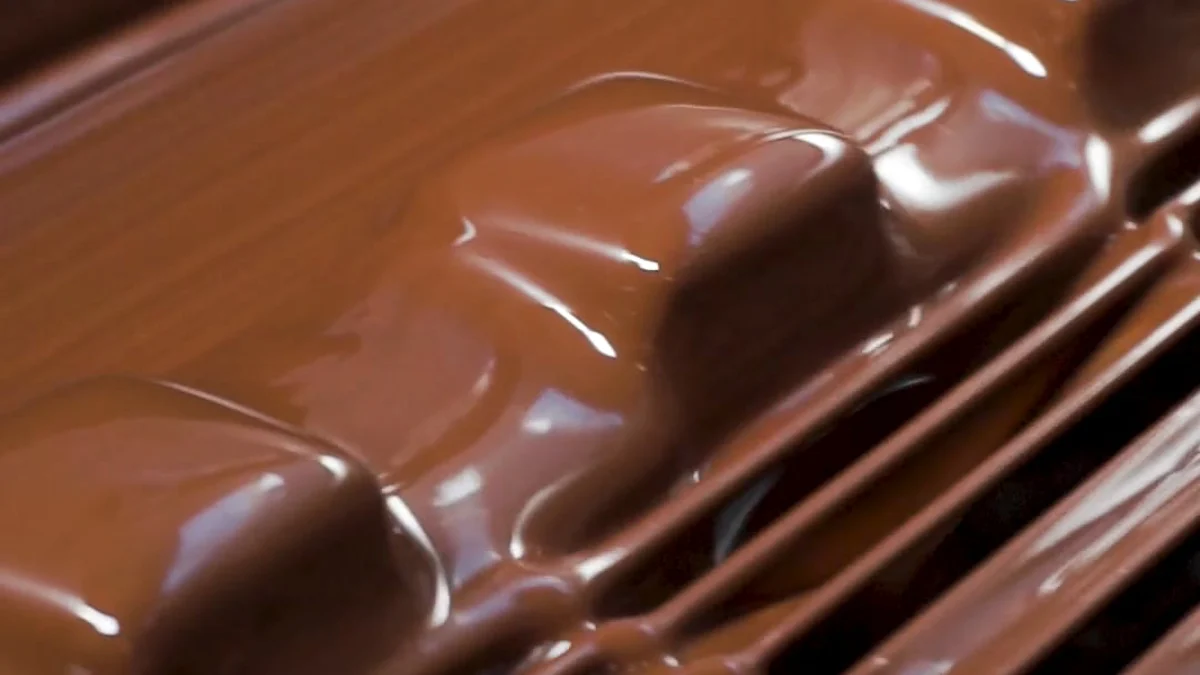
Mastering chocolate machines is a crucial skill for any aspiring chocolatier. This blog provides a comprehensive guide to help beginners navigate the world of chocolate making with ease. From understanding the basic components to exploring the various types of machines, readers will gain valuable insights into the art of chocolate production. By harnessing the benefits of using chocolate machines, individuals can elevate their confectionery creations to new heights, unlocking a world of delicious possibilities.
Understanding Chocolate Machines
When delving into the realm of chocolate machines, it is essential to grasp the fundamental components that play a pivotal role in the chocolate-making process. The first key component to understand is Cacao Butter. This luxurious ingredient, extracted from cacao beans, contributes to the smooth texture and rich flavor of chocolate creations. Next on the list is Cacao Liquor, not to be confused with alcoholic beverages, as it refers to the non-alcoholic essence of ground cacao beans. Lastly, Sweeteners are crucial additives that balance the bitterness of cacao, enhancing the overall taste of chocolate delights.
Moving on from the basic components, a beginner chocolatier must comprehend how chocolate machines operate to bring these elements together harmoniously. The journey begins with the Melting Process, where solid ingredients like cacao butter are transformed into a luscious liquid form. Subsequently, the Grinding Process meticulously refines the mixture into a homogeneous blend, ensuring a velvety consistency in every bite. Finally, the intricate Tempering Process refines and stabilizes the chocolate's structure through precise temperature control, resulting in a glossy finish and satisfying snap.
Understanding these core processes and components sets a solid foundation for mastering chocolate machines and unleashing your creativity in crafting delectable treats.
Types of Chocolate Machines

Exploring the diverse world of chocolate machines unveils a realm of possibilities for crafting delectable treats. Among the array of machines available, beginners must acquaint themselves with various types to enhance their chocolate-making journey.
Melting Machines
When it comes to transforming solid cacao butter into a velvety liquid form, the Chocolate Melting Tank stands as an indispensable ally. This machine ensures precise melting temperatures, preserving the delicate flavors and textures essential for creating exquisite chocolates.
Grinding Machines
For refining and homogenizing chocolate ingredients to perfection, Chocolate Conching Machine and Chocolate Ball Mill Machine take center stage. These machines meticulously grind cacao components, resulting in a smooth and decadent chocolate base ready for further confectionery adventures.
Tempering Machines
To achieve that coveted glossy finish and satisfying snap in your chocolates, mastering the Chocolate Tempering Machine is paramount. This machine refines the chocolate's structure through meticulous temperature control, ensuring a professional touch to your homemade creations.
Coating and Molding Machines
Chocolate Enrobing Machine
The Chocolate Enrobing Machine is a versatile tool that coats various confections with a smooth layer of chocolate. It ensures an even distribution of chocolate, creating a luscious shell around treats like truffles or nuts.
Chocolate Panning Machine
With the Chocolate Panning Machine, artisans can add an extra layer of flavor and texture to their creations. This machine evenly coats candies or nuts with chocolate, allowing for the addition of coatings like cocoa powder or sugar for a delightful finish.
Chocolate Depositor Machine
The Chocolate Depositor Machine is essential for molding chocolates into intricate shapes and designs. By depositing precise amounts of tempered chocolate into molds, chocolatiers can create beautifully crafted confections ready to delight any palate.
Using Chocolate Machines

Step-by-Step Guide
Pulverizing Sugar
To initiate the chocolate-making process, pulverizing sugar is a crucial step that ensures the sweetness is evenly distributed throughout the final product. By breaking down granulated sugar into fine particles, it blends seamlessly with other ingredients, creating a harmonious flavor profile.
Melting Cocoa Butter
The next essential task involves melting cocoa butter, transforming it from a solid state to a liquid form. This process requires precision and gentle heat application to maintain the integrity of the cocoa butter's natural properties, crucial for achieving a velvety texture in your chocolate creations.
Grinding Ingredients
Once the cocoa butter is melted, it's time to move on to grinding ingredients. This step involves combining cacao components with sweeteners and other additives, refining them into a smooth mixture. Through meticulous grinding, you ensure that all elements are perfectly integrated, resulting in a decadent chocolate base ready for further processing.
Tempering Chocolate
The final stage in using chocolate machines is tempering chocolate, a critical process for achieving that signature glossy finish and satisfying snap in your chocolates. By carefully controlling the temperature of the chocolate during cooling and reheating cycles, you stabilize its crystalline structure, ensuring a professional-quality outcome.
Common Mistakes to Avoid
Temperature Control
One common pitfall to steer clear of when working with chocolate machines is inadequate temperature control. Fluctuations in temperature can lead to undesirable outcomes such as grainy textures or dull appearances in your chocolates. Maintaining precise temperatures throughout each stage of the chocolate-making process is key to achieving consistent and high-quality results.
Ingredient Ratios
Another aspect to be mindful of is maintaining proper ingredient ratios. Balancing components like cocoa powder, fat content, and sweeteners is essential for achieving the desired taste and texture in your chocolates. Deviating from recommended ratios can result in overly bitter or overly sweet chocolates, impacting the overall flavor profile of your confections.
Tips and Tricks
Experimenting with Ingredients
Alternative Sweeteners
Exploring alternative sweeteners opens a realm of possibilities for enhancing the flavor profile of your homemade chocolates. Instead of traditional sugar, consider incorporating ingredients like honey or agave nectar to add a unique sweetness to your confections. These natural sweeteners not only provide a different taste but also offer potential health benefits compared to refined sugars. Experimenting with alternative sweeteners allows you to cater to various dietary preferences and create delectable treats that suit a wider range of palates.
Cocoa Pod Husks
Utilizing cocoa pod husks in your chocolate-making endeavors introduces an innovative approach to sustainability and flavor enhancement. These often-overlooked byproducts of cacao production can be repurposed to infuse your chocolates with subtle fruity notes and earthy undertones. By grinding cocoa pod husks into a fine powder, you can incorporate this ingredient into your recipes, adding depth and complexity to the overall taste profile of your creations. Embracing cocoa pod husks not only reduces waste but also contributes to the development of eco-friendly chocolate-making practices.
Maintaining Your Machines
Cleaning
Ensuring the cleanliness of your chocolate machines is paramount in preserving their functionality and extending their lifespan. Regular cleaning routines prevent the buildup of residue and contaminants that can affect the quality of your chocolate products. When cleaning your machines, use gentle detergents and non-abrasive tools to avoid damaging sensitive components. Pay special attention to areas prone to residue accumulation, such as grinding chambers and tempering bowls, to maintain optimal hygiene standards in your chocolate-making process.
Regular Maintenance
Incorporating regular maintenance practices into your chocolate machine care routine safeguards against unexpected breakdowns and ensures consistent performance. Schedule periodic inspections to check for signs of wear or damage on critical components like heating elements, agitators, or cooling systems. Lubricate moving parts as needed and tighten loose connections to prevent operational issues during production. By investing time in regular maintenance tasks, you prolong the life of your machines and uphold the quality standards of your chocolate creations for years to come.
By embracing experimentation with ingredients and prioritizing machine maintenance, aspiring chocolatiers can elevate their craft and embark on a journey towards mastering the art of chocolate making with confidence.
-
To summarize, understanding the core processes and components of chocolate machines is essential for aspiring chocolatiers. Mastering the art of using these machines opens up a world of creative possibilities in crafting delectable chocolates.
-
Start your chocolate-making journey with confidence, armed with the knowledge of basic components and machine types. Embrace experimentation with ingredients to elevate your creations and cater to diverse tastes.
-
Looking ahead, future developments in chocolate making aim to enhance sustainability and health benefits through innovative ingredients like alternative sweeteners and cocoa pod husks. Stay curious and explore new horizons in the evolving world of chocolate confectionery.


